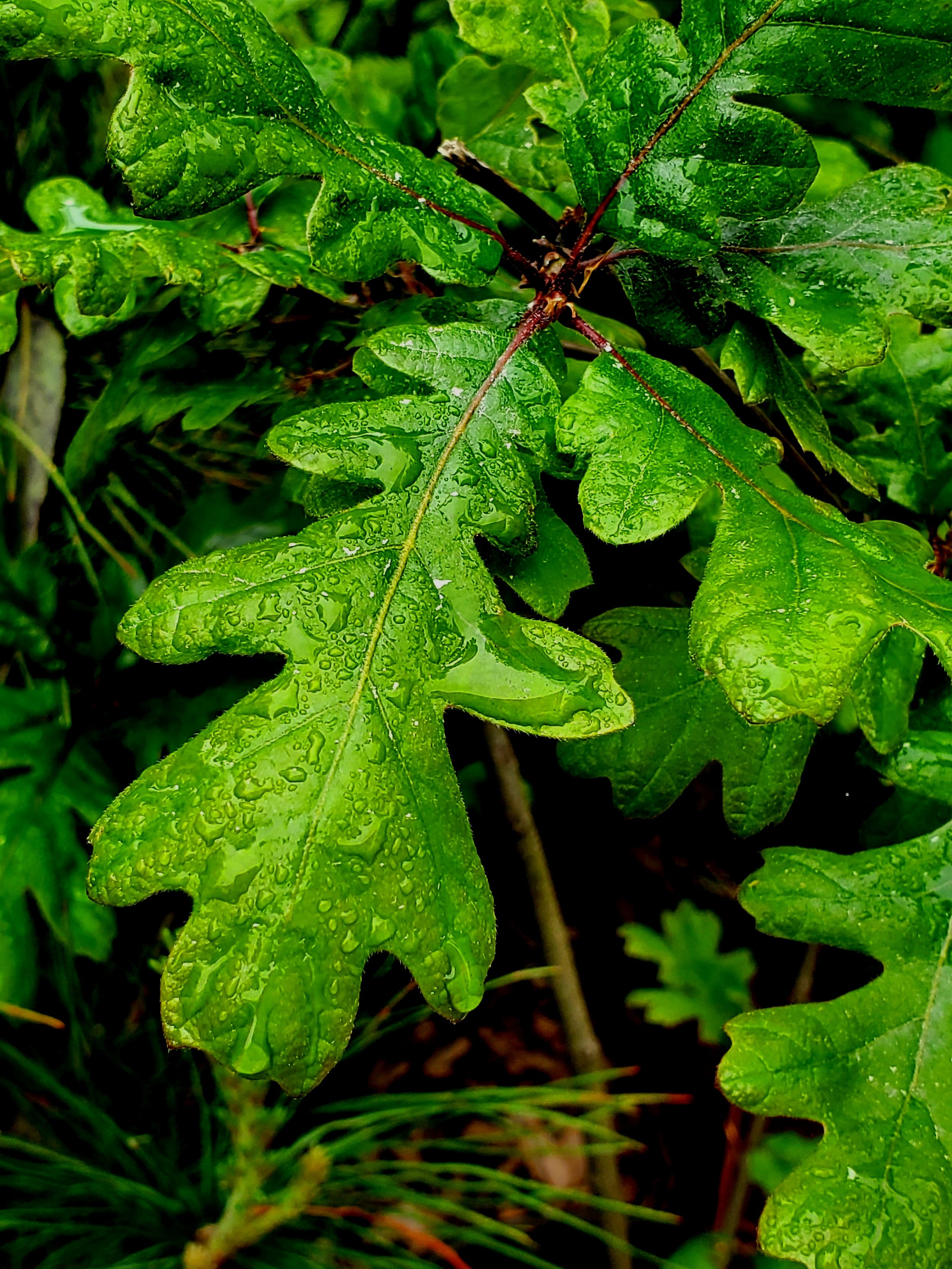
NATIVE PLANT INVENTORY
Trees
Acer circinatum Vine Maple Great as an understory plant, lovely fall color, attracts songbirds, great in shady areas near buildings and parking areas. Deer resistant
Amelanchier alnifolia Western Serviceberry Dry to moist open forest areas, well-drained soil, great for the forest edge, edible fruit for mammals and birds. Rarely damaged by deer
Betula papyrifera Paper Birch Grow them in groups to transition from forest to open ground, shallow root system, and lots of moisture. Deer resistant
Calocedrus decurrens California Incense cedar Up to 75’H, slow grower, well drained slightly acid sandy loam soil, full sun but can tolerate partial shade. Has a scent like incense, no pests, birds and mammals like the seeds. Deer resistant
Corylus cornuta Beaked Hazelnut Resistant to blight, deciduous, 3-15’, moist well-drained soil, lovely yellow catkins bloom late winter Jan- March, great for use at the edge of the forest, woodland garden, lovely autumn color with yellow leaves, pollinated by wind, can be an allergen, regenerates from root crown after a fire, edible nuts if you get them before squirrels and jays. Deer resistant
Malus fusca Western Crabapple Slow grower to 36’, Moist woods, wetland edge and wet areas, fragrant blossoms that bloom April - May, fall color, Edible and medicinal, fruit is high in pectin. Deer candy, host to butterfly larvae, mason bees, great cover for wildlife and birds enjoy the fruit.
Myrica californica California Wax Myrtle Fast-growing, long-lived, low maintenance, deer resistant, bank stabilization, fall interest, great for small gardens, hosts 22 species of moths and butterflies, cold tolerant.
Picea sitchensis Sitka spruce 18- 225’, moist foggy rain, large specimen tree, great wildlife tree, browsed by deer, rabbits and grouse. Seeds valued by birds and small mammals, great nesting and roosting as well as winter cover. (avoid Colorado Spruce in PNW as it is susceptible to pests) Deer resistant
Pinus contorta Shore pine Evergreen, Full sun. likes dry but is adaptable, salt tolerant, good for smaller lots, pinch candles in half in spring to keep smaller, great food source for wildlife. Rarely damaged by deer
Pinus monticola Western White Pine Evergreen, 100’, Full sun, safe for use under power lines and small lots. Pinch candles in half in spring to keep them smaller. Hummingbirds, butterflies, birds love it. Second to Oaks in important wildlife habitat tree Oily nutritious seeds and food for mammals as well as nesting materials and site. Keep away from patios and driveways due to pitchiness. Susceptible to rust so do not plant with Ribes which increase susceptibility to rusts. Rarely damaged by deer
Populus tremuloides Quaking Aspen Fast growing deciduous tree 20-60’, Multitrunked, short lived, Great for wet open forests and meadows, grows from suckers, adds movement to landscape, keep them away from drainage and sewer areas, catkins in April and May. Major tree allergen. Great for deer browse, nesting, and host to native birds and insects
Prunus emarginata Bitter Cherry 6-45’ H, short lived 30-40 years, great addition to a woodland garden, blooms April - June, non-edible fruit enjoyed by slugs, birds, and small mammals. Browsed by deer.
Quercus garryana Oregon White Oak Difficult to transplant, great addition to landscape, food, medicinal, and habitat. Deer resistant
Salix hookeriana Coastal Willow 15-45’ fast growing. Cornerstone plant for PNW wetlands. Full sun to mostly sunny sites. Great for controlling erosion around waterways, great for PNW native insects because it has lots of pollen for them. Deer, beaver birds and small mammals also benefit from this tree, cools water and restores habitat.
Salix lacandra Shining Willow Similar to other Salix species
Salix lucida Pacific Willow Great for wet areas and to secure slopes from erosion near water, fast-growing, food/ habitat for wildlife, deer will eat the bark, great for making your own rooting hormone for plant propagation, Native Peoples used willow for making string, can be used to create tunnels in the garden by bending the boughs over and planting the end into the soil, also may be used to create a woven living fence.
Tsuga heterophylla Western Hemlock 150-195’, graceful delicate appearance, long lived, specimen tree or in drifts, grows slower in shade and faster in sun, tolerant of both dry and wet sites, bird nesting spot, food and browse for mammals.
Thuja plicata Western Red Cedar Sun to part shade decay-resistant, great for hedges and screening, large 20-foot width at maximum, can be planted near buildings because of the narrow crown, tolerates shearing. Deer resistant.
Shrubs
Aruncus dioicus var. Acuminatus Goat's Beard Robust perennial, forest edge, Moist to dry soil, attracts birds, insects, wildlife, deer and rabbit resistant, sun/shade, lovely frothy white flowers.
Cornus sericea Red Osier Dogwood Deciduous shrub15’ 6-9’ wide, great winter color, white flowers, blue fruit, spreads by rhizomes, Understory plant, sun/shade/ habitat for birds, needs fertile soil, caution (mildly toxic).
Gaultheria shallo Salal Likes acid soil, is great with ferns and rhododendrons, attracts birds, understory shrub, pinky-white flowers. Deer resistant.
Holodiscus discolor Ocean spray Dry to moist open disturbed forest areas, drought-tolerant, good for backs of borders, great for sunny woodland forests, habitat for birds, not the first choice for deer.
Lonicera involucrata Twinberry honeysuckle 1.5- 9’ H, plant along forest edges and other areas where you would like a hedge, rain garden and reclamation and riparian sites. Wet meadows and forests. Blooms April - August, Ripe fruit in September, Medicinal uses, Provides cover for small mammals. Deer resistant
Mahonia aquifolium Tall Oregon Grape M akes a nice hedge, attracts wildlife, edible, understory plant, sun/shade, yellow flowers. Deer resistant.
Myrica gale Sweet gale 3-6’ slow spreading with suckers. Sun part shade, likes acidic soils. Tolerates wind, rabbits and deer
Philadelphus lewisii Mock Orange Drought-tolerant, prefers fertile soil, great near walkways and windows, fragrant, pollinator magnet. Deer resistant.
Ribes sanguineum Red Flowering Currant Dry open woods, great near fruit trees, spring interest with pink flowers, deer resistant.
Rosa gymocarpa Baldhip Rose Great in a shady woodland garden, food for mammals, birds, and insects, hips last through winter as a food source for birds and insects. Deer resistant.
Rosa nutkana Nootka Rose 2-9’ aggressive grower, will create dense impenetrable thicket, great for shorelines, meadows, forest edge, open forest, will stabilize stream banks, lovely fragrance, pink flowers, red-purple hips.
Rosa pisocarpa Clustered Rose 3’-6’ Valuable at stabilizing banks especially along streams, wetland plant, blooms pink May- July with hips in fall, prefers shady areas, great for hedge, Deer resistant
Sambucus racemosa Red Elderberry 10-12’ deciduous shrub, lovely white flowers, inedible raw red fruit (poisonous alkaloids) but can be made into jelly and wine when cooked, attracts birds, sun/shade, moist soils, forest edge. Moderately deer resistant
Spirea douglasii Douglas Spirea 4-6’ fast growing multi branched deciduous shrub, dark pink flowers that look like cotton candy, great for streambanks wetland and damp meadows, replaces the non-native butterfly bush, great for rain gardens, attractive to wildlife and provides them with essential habitat, edible and medicinal. Deer resistant
Symphoricarpos albus Snowberry Very adaptable to many soil types, lovely white berries, Open forests, rocky slopes. Deer resistant
Vaccinium ovatum Evergreen Huckleberry Full sun, great in the naturalized landscape, great understory shrub, edible berries, attracts wildlife, low water needs after establishing. Deer resistant
Herbaceous plants
Achillea millefolium Yarrow Drought-tolerant, hardy, great in flower borders and parking strips, attracts pollinators. Deer resistant.
Aquilegia formosa Western Columbine 8-48”, great for rocky slopes and beaches, moist shady spots, or open meadows. Red-yellow flowers blooming from spring to summer, attracts hummingbirds and butterflies. Deer resistant
Armeria maritima Sea thrift 10” high, extremely salt tolerant, tough plant, great for rock gardens and xeriscaping as well as green roofs. Deer resistant
Asclepias speciosa Showy Milkweed 1.5-5’ tall, gray-green fuzzy leaves, Flowers are star-shaped and rose-purple and age to yellow, thick seed pods that have large reddish seed, this plant is adaptive to many types of sites from moist to dryer areas, great for attracting Monarch butterflies and other pollinator species, this is a very specific plant for Monarchs because they only lay eggs on this plant and it is what the larvae eat before turning into a chrysalis, plant a large grouping of this plant for success. (Note: this plant can become a nuisance) Deer resistant
Delphinium trolliifolium Cow Poison Shady moist areas, lovely blue flowers, very poisonous. Deer resistant
Dicentra formosa Western Bleeding Heart Shade lover, delicate pink heart shaped flowers, shady entrances, woodland gardens, attracts hummingbirds. Deer resistant, great for cutting flowers.
Fritillaria affinis Checkerlily Prairie plant, great with Pinus contorta and Quercus garryana. Deer, rabbit, and slug resistant.
Rudbeckia occidentalis Western Coneflower 24-80”, good for wet meadows, pond edges, boggy wetland. Deer resistant.
Solidago lepida Western Goldenrod 12-59”H, Yellow flowers July-October, use on forest edges, riparian meadows and disturbed fields, Full sun, pollinator friendly, dry-moist conditions, can be used medicinally. Deer resistant
Vancouveria hexandra Inside Out Flower Evergreen -deciduous depending on species, trilobed leaves, PNW form of Epimedium, semi-shade dappled planting areas, pest free, easy Native to grow, great to use when filling between taller plants, dryer/ moist soil. Moderately deer resistant
Groundcovers
Arctostaphylos uva-ursi Kinnikinnick Full to partial sun, dry to medium moisture levels, low maintenance, great for erosion control, attracts birds, pinky-white flowers in spring. Deer resistant
Cornus unalaschkensis (formerly canadensis) Bunchberry Semi-evergreen groundcover, work lots of moist duff into the ground around plants, prefers deeper shade. Deer resistant
Fragaria vesca Wild strawberry 4-12”, Woodland edges, rocky warm south facing slopes, edible berries May-September.
Mahonia nervosa Cascade Oregon Grape Evergreen shrub, blue edible berries, holly-like leaves, bright yellow flowers, attracts wildlife, can be used medicinally, sun/shade dryer to moist areas. Deer resistant
Mahonia repens Creeping Oregon Grape Sun/shade, little water once established, great groundcover, winter color interest. Deer resistant.
Oxalis oregana Wood Sorrel Shady ground cover, moist areas, edible perennial, whitish pale pink flowers. Deer resistant
Sedum oreganum Sedum Rocky ledges and slopes, pots, rockeries, forest edge, drought-tolerant (too much water promotes root rot), likes to sprawl, edible (tastes of cucumber). Deer resistant.
Sedum spathulifolium Broadleaf stonecrop 2-8”, full sun to part shade, groundcover for well drained dry rocky and gravelly soils, medicinal. Deer resistant.
Ferns
Adiantum aleuticum Maidenhair Shady areas, rich soil, rocky forests and streambanks, waterfall spray zones. Deer resistant
Asplenium trichomanes Maidenhair Spleenwort Great rock garden fern, can be grown in wall crevices, great for containers. Deer resistant
Blechnum spicant Deer Fern Moist wet forests, wet slide areas, under Alders, stream banks. Deer resistant
Polystichum munitum Sword Fern Lots of moisture, hummingbird nesting material, shade-part shade, understory plant, edible roots (roasted), riparian zones, wooded hillsides. Deer resistant.
Native to SW Oregon and California
Ceanothus ‘Dark Star’ Wild Lilac Sun/shade, little no water once established, good drainage and very low fertility in the soil needed, good on slopes, lovely blue-purple flowers, great for bees. Deer resistant.
Garrya elliptica Silk Tassel Evergreen shrub, tall dense 8’x8 can become a tree at 20-30’, yellow-greenish gray winter flowers in catkin form, purplish fruit, shade/sun, easy shrub not fussy about soil just as long as it has good drainage, great foliage. Deer resistant
Note: Deer resistance does not mean deer will not eat it, only that they haven’t chosen to eat it and will most likely choose other plants instead. Take care to protect young newly planted species from deer until plants are well established.
